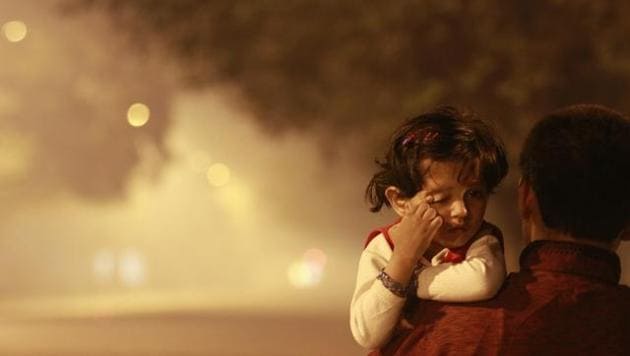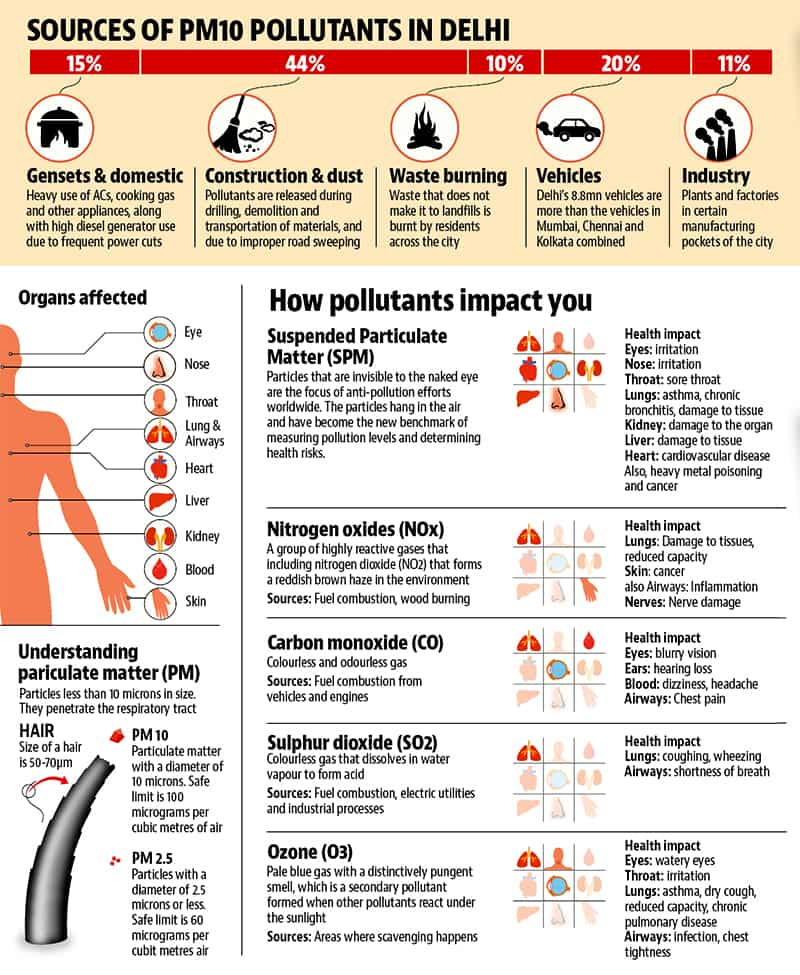Let’s fight pollution: Smog over, but the battle against Delhi’s toxic air isn’t
The first of HT’s seven-part series serves as a call to action to curb rising pollution levels in Delhi.
In the first week of November this year, the capital’s 24-hour average air pollution — 900micrograms per cubic meter of particulate matter finer than 2.5 micrometers — was 40 times higher than the World Health Organisation (WHO) guidelines (25ug/m3) and around 15 times higher than the Indian standards (60ug/m3).

All segments of the city’s population — children, senior citizens, construction labourers, street workers, people who work from home as well as sportspersons — were affected by the envelop of smog. If confinement was a problem for children, senior citizens were particularly vulnerable to breathing ailments; if exposure was extremely high for construction workers, even those working from home were forced to take precautions; where street workers like auto drivers and vendors had no choice but to go out for daily bread and butter, sportspersons had to abandon their training schedules.
“When pollution levels go up, people living with chronic respiratory illnesses like asthma and bronchitis, experience an aggravation of symptoms. Pollution also results in hypertension, increasing the risk of heart attack and stroke,” said Dr Srikant Sharma, senior consultant physician at Moolchand hospital.
Read more | Explainer: All you need to know about Delhi air pollution
A report released by WHO showed that one in every four children in the capital suffers from serious lung disorders. According to the Central Pollution Control Board (CPCB), PM2.5 levels over 250ug/m3 can adversely affect even those who are healthy. Health experts said that the fine PM2.5 which can embed itself in the respiratory and cardiac system has been linked to up to 16,200 premature deaths a year in Delhi. It is also responsible for a staggering 6 million asthma attacks annually.
Apart from particulate matter, Delhi’s air is a concoction of toxic gases such as sulphur dioxide, ozone and nitrogen oxides, which cause a range of short and long term health effects including reduced lung capacity and shortness of breath. Prolonged exposure also affects the functions of heart and causes cancer.

Worse than the worse
The pollution levels in the city this year broke several records. The Centre for Science and Environment (CSE) said the smog on November 6 was worse than the great London smog of 1952 which had caused around 4,000 premature deaths.
An IIT Kanpur study showed that stubble burning in the neighbouring states of Punjab and Haryana, use of diesel cars, construction and road dust and coal-based power plants were the major contributors to poor air quality in Delhi. Usually, winter in Delhi is the time when pollution levels are at peak. The existing contributors combine with poor weather conditions and low winds, making the pollution particles settle on the surface.
In the face of such acute pollution levels and disruption of normal life, the government could only muster a ‘lukewarm’ response. On November 3, an emergency meeting was called by the Union environment secretary, with the environment secretaries of five states-Punjab, Haryana, Uttar Pradesh, Delhi and Rajasthan. It ended with the decision to shut down brick kilns, regulate use of diesel gensets and to conduct drives against polluting vehicles.
After a few days, the Delhi government too, came up with measures like mist fountains, road vacuuming, and water sprinkling on road sides. However, these emergency measures cannot solve the problem of deteriorating air quality in the long run. Moreover, these measures were forgotten as soon as the air quality improved marginally after a week because of the westerly winds blowing into Delhi.
The Delhi government asked people to stay away from work but offered no compensation to those who could not, or whose livelihood suffered.
Facts
In the first week of November, Delhi’s 24-hour average air pollution was 40 times higher than WHO guidelines.
PM2.5 levels over 250ug/m3 can adversely affect even those who are healthy
Apart from particulate matter, Delhi’s air has toxic gases such as sulphur dioxide, ozone and nitrogen oxides
A WHO report shows that one in every four children in Delhi suffers from serious lung disorders
The solutions
Emergency measures may have helped to mitigate the smog conditions but what Delhi needs is a regional plan to tackle pollution at large. To begin with, we can take lessons from China’s Beijing, which has been facing a similar problem. Though Beijing was the world’s most polluted city for almost a decade, it has now taken some far-reaching and difficult measures to ensure that the worse is over.
According to NASA’s satellite data, the PM 2.5 levels across India got worse by 13% between 2010 and 2015, while China’s steadily improved. Last year was the worst on record for India in terms of particulate pollution and the best in China. PM 2.5 levels across China fell by 17% between 2010 and 2015 with quite a dramatic improvement towards 2015 (Beijing saw a 16% annual fall in PM 2.5 levels).
The data by Global Burden of Diseases (GBD) also showed that more people died in India because of exposure to outdoor air pollution than in China last year. In India, 3,283 deaths were reported in 2015, while in China there were 3,233 premature deaths per day.
“It clearly indicates that China’s strong measures to tackle pollution have contributed to the year-on-year air quality improvement on record, while in contrast, India’s pollution levels have increased over the past decade,” said Sunil Dahiya, India campaigner for NGO Greenpeace, which analysed the data.
China has instituted a broad, regionally coordinated system of air pollution monitoring. It has installed high-tech pollution abatement equipment on a majority of its power plants and devised means to restrict car ownership in major cities.
Dahiya also said that the governments and citizens should come together to implement measures against pollution. “Making noise merely when the pollution levels rise, will not help, we need a comprehensive plan for the next 365 days,” he added.
In October 1948, a small industrial town of Donora, in Pennsylvania (USA) experienced its worst smog spells. After two days, 20 people died and over 7000 people were hospitalised, according to government data. The Donora disaster, however, paved way for the Clean Air Act which was finally passed in 1963. The act was amended in 1970.
This is exactly what Delhi needs — a strong pollution control plan, which will pave a road map for the years to come.
CALL FOR ACTION
In the next seven days, Hindustan Times will highlight how different categories of people in Delhi are affected by its foul air and how poisonous elements have wreaked havoc on people’s health, livelihood and lifestyle.
In the coming week, we call for action from the government and give insights into what you can do as citizens in curbing the rising pollution levels.
Write to us at webresponse@hindustantimes.com with your suggestions or tweet to us with #LetsFightPollution.
Stay updated with all top Cities including, Bengaluru, Delhi, Mumbai and more across India. Stay informed on the latest happenings in World News along with Delhi Election 2025 and Delhi Election Result 2025 Live, New Delhi Election Result Live, Kalkaji Election Result Live at Hindustan Times.
Stay updated with all top Cities including, Bengaluru, Delhi, Mumbai and more across India. Stay informed on the latest happenings in World News along with Delhi Election 2025 and Delhi Election Result 2025 Live, New Delhi Election Result Live, Kalkaji Election Result Live at Hindustan Times.





